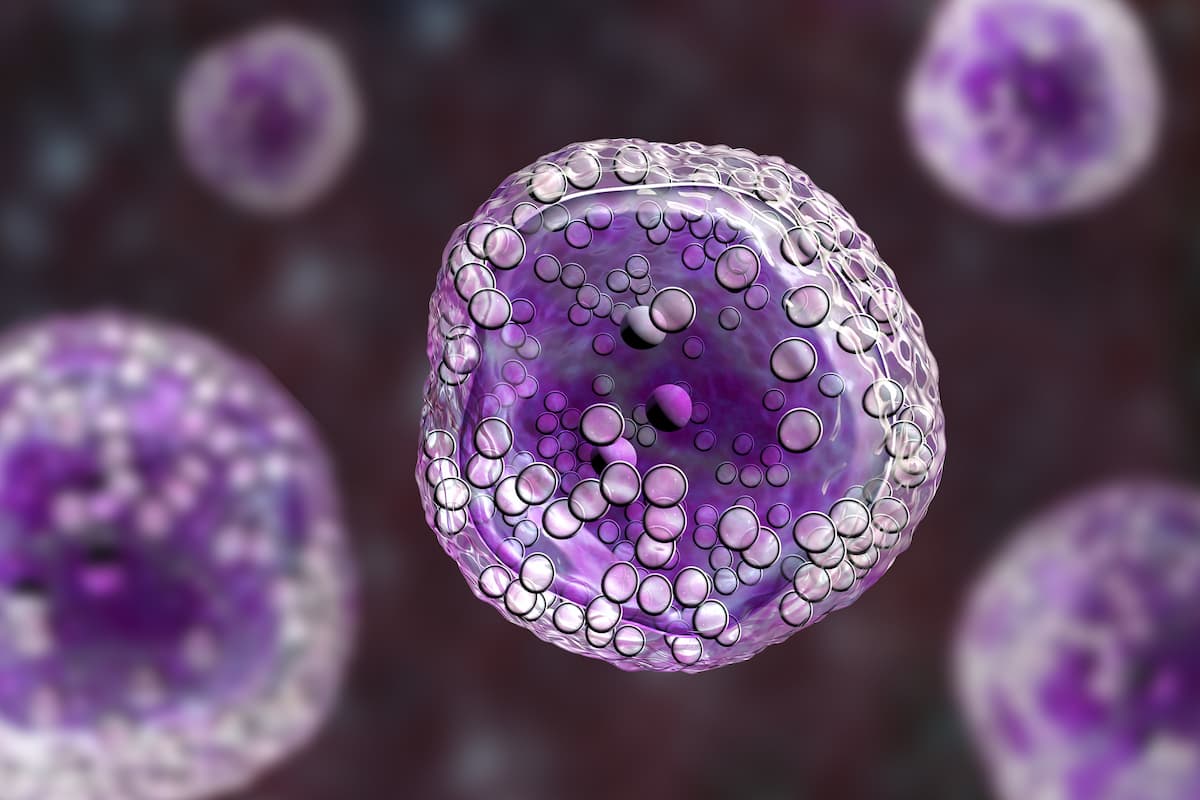Cilta-cel Shows Enduring Responses in Relapsed/Refractory Multiple Myeloma
The early introduction of cilta-cel in patients with relapsed/refractory multiple appears promising based on data from the phase 2 CARTITUDE-2 trial, according to Jens Hillengass, MD, PhD.
“We believe these [data] show that early introduction of cilta-cel in these patient cohorts is promising, and CARTITUDE-4 trial has also done a phase 3 study evaluating these early lines of therapy,” according to Jens Hillengass, MD, PhD.

Sustained responses were achieved with ciltacabtagene autoleucel (cilta-cel; Carvykti) in the treatment of patients with relapsed/refractory multiple myeloma, according to findings from the phase 2 CARTITUDE-2 trial (NCT04133636) presented at the 2024 Tandem Meeting.1
These findings were presented by Jens Hillengass, MD, PhD.
Patients included in the phase 2, multicohort CARTITUDE-2 trial (NCT04133636) were separated into 2 cohorts: those who received 1 to 3 prior lines of therapy (cohort A; n=20) and those with relapse after first-line treatment (cohort B; n=20). As of April 2023, both cohorts had durable results at the median follow-up (cohort A, 29.9 months; range, 3.3-35.6; cohort B, 27.9 months; range, 5.2-32.1).
MRD negativity with a 10-5 threshold, the trial’s primary end point, occurred in 100% of MRD- evaluable patients (n = 17) in cohort A and 93.3% of MRD- evaluable patients (n = 15) in cohort B. Of the patients evaluable for sustained MRD negativity at 6 months or more (cohort A, n = 11; cohort B, n = 13), 8 (72.7%) and 10 (76.9%), respectively, experienced sustained MRD negativity, while among those at 12 months or more (cohort A, n = 14; cohort B, n = 13) 7 (50.0%) and 8 (61.5%) experienced the same outcome.
“…And not all patients were evaluable for MRD and that can sometimes be challenging,” Hillengass professor of oncology and internal medicine, chief of myeloma, vice chair for research in the Department of Medicine at the Roswell Park Comprehensive Cancer Center in Buffalo, New York, noted.
The ORR in cohort A was 95% (95% CI, 75.1%- 99.9%), including a stringent complete response (sCR) rate of 85%, a CR rate of 5.0%, and very good partial response rate (VGPR) rate of 5.0%, and was 100% (95% CI, 82.4%-100%) in cohort B, including an sCR rate of 73.7%, CR rate of 15.8%, and VGPR rate of 10.5%.
In cohort A, median time to first response was 0.99 months (range, 0.7-3.3) and median time to best response was 3.25 months (range, 0.9-13.6), with a 24-month duration of response (DOR) rate of 73.3% (95% CI, 47.2%-87.9%), while cohort B demonstrated median times of 0.95 months (range, 0.9-9.7) and 5.1 months (range, 0.9-11.8), with a 24-month DOR rate of 70.5% (95% CI, 42.5%-86.7%).
At that time of the median follow-up the overall survival (OS), progression-free survival (PFS), and duration of response (DOR) were not estimable in both cohorts. However, the 24-month OS rates in cohorts A and B were 75% (95% CI, 50.0%-88.7%) and 84.2% (95% CI, 58.7%-94.6%), respectively, and the 24-month PFS rates were 75% (95% CI, 50.0%-88.7%) and 73.3% (95% CI, 47.2-87.9%).
There were no new safety signals reported; however, 1 neurotoxicity event occurred in cohort B. Regarding grade 3 and 4 AEs of special interest (AESI), 2 patients (10%) in cohort A and 1 patient (5.3%) in cohort B experienced cytokine release syndrome (CRS). The median time to onset of CRS was 7 days in cohort A and 8 days in cohort B, and the median duration was 3 and 4 days, respectively.
Other grade 3 and 4 treatment-emergent AEs (TEAEs) in cohorts A and B included CAR T-cell neurotoxicity (5% and 5.3%, respectively) and other neurotoxicity (5% and 5.3%). Movement and neurocognitive were found only in cohort B (5.3%), and second primary malignancy was also found only in cohort B (5.3%). There were no grade 3 or 4 ICANS AESIs observed in either group.
Overall, cytopenia-related grade 3 and 4 TEAEs in cohorts A and B were neutropenia (95% and 89.5%, respectively), lymphopenia (80% and 47.4%), thrombocytopenia (40% and 26.3%), anemia (45% and 47.4%), and leukopenia (60% and 31.6%).
In both cohorts, patients who were either naive to CAR T-cell therapy or anti–BCMA therapies, or both, received cilta-cel infusion with a target dose of 0.75×106 CAR plus viable T cells/kg 5 to 7 days after lymphodepletion. To reduce the risk of movement and neurocognitive TEAEs, management strategies were implemented but not specified.
Patients in cohort A had 1 to 3 prior lines of therapy and were lenalidomide (Revlimid) refractory MM, while patients in cohort B had experienced early relapse of less than 12 months after autologous stem cell transplant (ASCT) or the start of antimyeloma treatment if no transplant was conducted.Specifically in cohort B, 16% of patients had high-risk cytogenetic abnormalities, 79% were refractory to their last lines of therapy, 16% had triple-class refractory disease, and 79% had prior ASCT.
The median age was 60 years in cohort A and 58 years in cohort B, and the majority of patients were male in both cohorts (65% and 73.7%, respectively). Regarding race, 90% were White and 10% were Black in cohort A, compared with 73.7% and 10.5%, respectively cohort B.
“We believe these [data] show that early introduction of cilta-cel in these patient cohorts is promising, and CARTITUDE-4 trial has also done a phase 3 study evaluating these early lines of therapy,” Hillengass stated.“Cohort A provides insight into longer-term survival outcomes that may be expected in the CARTITUDE-4 trial and cohort B data highlight the durable efficacy of cilta-cel in patients with early relapse where there is unmet need.”
Reference
Hillengass J, Cohen A, Mounzer AE, et al. The phase 2 cartitude-2 trial: updated efficacy and safety of ciltacabtagene autoleucel in patients with multiple myeloma and 1–3 prior lines of therapy (Cohort A) and with early relapse after first line treatment (cohort B). Presented at: 2024 Transplantation and Cellular Therapies Meeting; February 21 to 24, 2024; San Antonio, TX. Abstract 42.